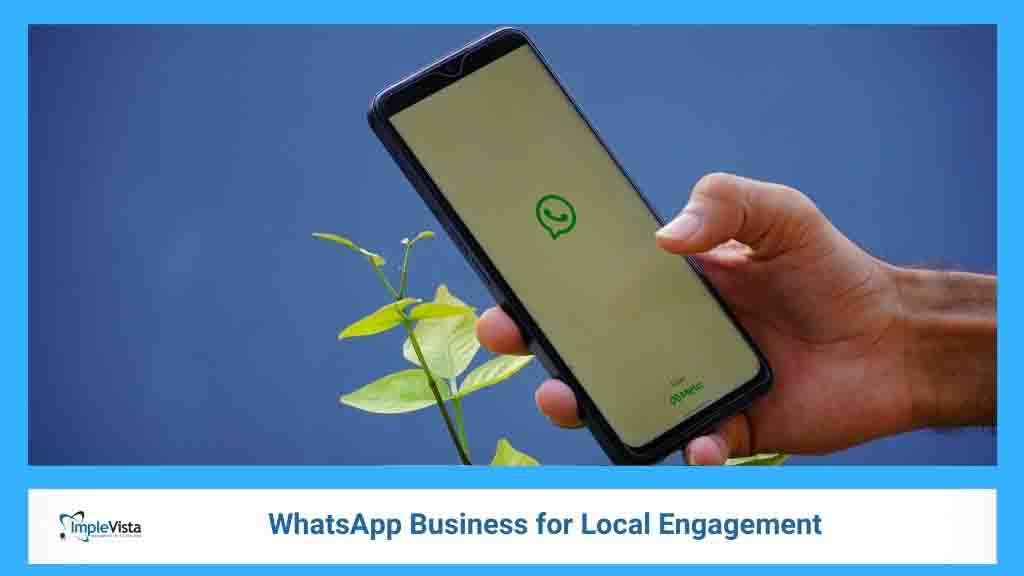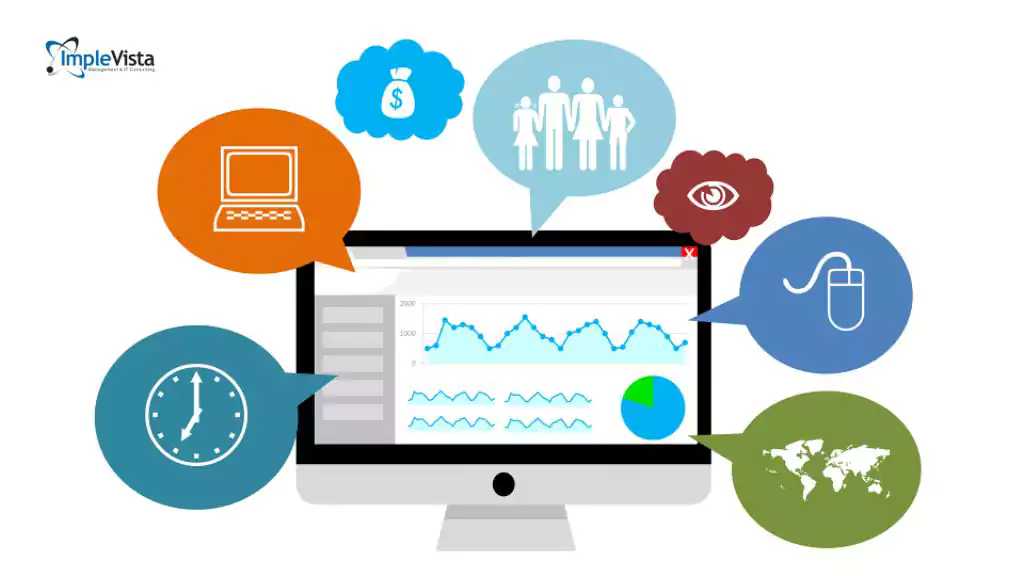WhatsApp Business has become a powerful channel for local customer engagement. With over 2.7+ billion users worldwide, WhatsApp lets businesses reach customers where they already spend time. Even more compelling: WhatsApp marketing campaigns see ~98% open rates (versus ~20–25% for email). In practice, almost every WhatsApp message is read, and many users respond within minutes.
That means promotional offers, updates, and alerts sent via WhatsApp get seen almost universally – far beyond the reach of email or SMS. For local businesses, this immediacy is a game-changer: a retailer or restaurant can send an offer directly to neighborhood customers’ phones and know it will be opened (and often clicked) almost immediately.
WhatsApp messages also drive much higher engagement. Studies report typical WhatsApp click-through rates (CTR) of 15–80%, compared to only ~2–5% for email. In one example, a D2C brand saw an 80% CTR on a WhatsApp broadcast, versus just 5% on a comparable email campaign. Customers find it easy to tap on links or buttons in chat rather than digging through their inbox.
And because WhatsApp threads are conversational, businesses can immediately follow up on any click or question. In short, WhatsApp Business turns a message into a real-time dialogue, making it far more effective than static email blasts. The WhatsApp platform also offers features that boost conversions, especially for local markets. Using the WhatsApp Business API (WABA), companies can integrate automated chatbots, broadcast lists, and product catalogs right into their messaging flow.
Chatbots can answer FAQs instantly, broadcast lists let you push targeted updates to 256+ contacts at once, and catalogs let customers browse products without leaving the app. Combined with that 98% open rate, these tools help local businesses turn engagement into real sales. Below we explore how each feature works and how local shops, services, and SMEs can leverage them.
Why WhatsApp Business API Is a Game-Changer for Engagement
WhatsApp Business API is built for scalable, interactive communication. Unlike the consumer app, the API version connects your business directly to WhatsApp’s backend, enabling automated, large-scale messaging. This means you can integrate WhatsApp with CRM tools or marketing platforms and send structured messages (with buttons, images, etc.) at any time. You can also have multiple team members respond under one business identity. For local customer engagement, the API’s power lies in combining WhatsApp’s native openness with automation and data.
- Automated Chatbots: WABA lets you deploy chatbots to handle routine queries 24/7. For example, a travel agency in Dhaka used a WhatsApp bot to automate booking FAQs and instantly saw response times drop from 5 minutes to 30 seconds – and online bookings jumped 22%. These AI assistants can speak local languages, route customers to humans when needed, and even collect leads (e.g. “Welcome! Do you want to hear today’s offers?”). By answering customer questions at any hour, chatbots turn WhatsApp into a self-service help desk, improving satisfaction and boosting sales.
- Broadcast Lists & Bulk Messaging: The API supports sending broadcast messages to large segments (up to 256 recipients per list) instantly. Unlike group chats, broadcast lists keep each customer’s identity private. Because recipients must have saved your number, this ensures you’re messaging genuinely interested contacts. Broadcasts are perfect for local announcements – a flash sale, a new menu, a store opening, etc. – delivered in one click. You can create multiple lists (e.g. city, age group, loyalty tier) and tailor the message accordingly. And with nearly everyone opening WhatsApp messages, your announcement won’t be missed.
- Interactive Product Catalogs: WhatsApp API lets you build a visual catalog of your offerings inside the chat. Think of it as a mobile storefront: customers scroll through your catalog listing items with images, names, prices, and descriptions – all without leaving WhatsApp. Catalogs support up to 500 products (and 10 images per product) in the app, or even more with an API integration. This is hugely beneficial for local retailers, restaurants (menu displays), or salons (service galleries). Customers can tap an item to see details or share it, then message you directly to buy or book. One advantage: shopping remains conversational. After a customer browses, the business can quickly chat to suggest add-ons or send checkout links. Embedding catalogs into WhatsApp removes friction – as Wapikit notes, integrating catalog “cards” and quick-pay buttons can turn WhatsApp into a direct sales channel, rather than just support.
These features translate into real results. Data from markets like India show WhatsApp campaigns dramatically outperform email: businesses report 45–60% conversion rates on WhatsApp vs only 2–5% on email. Likewise, D2C brands see 200–300% ROI increases by shifting budget to WhatsApp. Local businesses can tap into this advantage: a family-run restaurant that sends daily specials via WhatsApp will likely see more orders than one that tweets or emails the same info. By blending rich media, instant support, and automation, WhatsApp Business API makes customer engagement both personal and scalable.
Leveraging Chatbots, Broadcasts, and Catalogs
1. Chatbots & Automation
WhatsApp chatbots are the cornerstone of efficient local support. They can:
- Answer FAQs instantly – “What are your opening hours?” or “Is this product in stock?” – without human intervention.
- Qualify leads by asking qualifying questions (e.g. “Which service do you need?”) before handing off to a salesperson.
- Handle bookings and orders: e.g. a salon bot can show available slots and schedule appointments automatically.
- Send appointment reminders or delivery updates to reduce no-shows.
These bots use templates and flows to keep conversations on-brand. According to industry reports, many businesses automate up to 80% of common queries on WhatsApp. Implevista’s own case studies show this can drastically cut response times and boost sales: the earlier travel agency example saw bookings rise 22% with a bot on WhatsApp. Across industries – from clinics sending lab results to local shops answering product questions – chatbots on WABA ensure customers get fast answers in their preferred channel.
Best practices: Craft a friendly welcome message (“Hello! How can we assist you today?”) and set up quick-reply buttons for common options (like “View Menu” or “Book Now”). Use customer data to personalize (“Hi Rahim, thanks for ordering last week – need another delivery?”). And always include an option to connect with a human (“Type ‘agent’ to chat with a person”). Over time, you can train your bot with real queries to become even more helpful. The result is a 24/7 support staff that fits in every customer’s pocket.
2. Broadcast Lists & Bulk Messaging
Broadcast messaging on WhatsApp is like sending SMS or email blasts – but far more effective. With the API, you can push the same announcement to thousands of opt-in contacts with one command. For example, a local boutique might create a broadcast list of VIP customers and send them a “New Spring Collection” launch message, or a cafe might notify morning customers of a breakfast deal.
Some key points about broadcast lists:
- Opt-in is mandatory: Customers will only receive your broadcast if they have your number saved and have agreed to messaging. This keeps the list engaged and compliant.
- Privacy: Recipients get the message as a normal chat; they don’t see who else was on the list. (It’s not a group.)
- List limits: Each broadcast list can include up to 256 contacts. You can create multiple lists (so segment your audience by neighborhood, product interest, or loyalty level). There’s no limit on the number of lists you can maintain.
- Personalization: Although broadcast messages are bulk sends, you can still personalize them slightly (e.g. use first names in the salutation) to increase open rates.
Because WhatsApp boasts such high open rates, even generic broadcast promotions get stellar engagement. Eazybe explains that broadcast lists are “more effective for large businesses and enterprises than email or SMS” because only opted-in contacts (who saved your number) receive them. In practice, segmenting lists by location or interest makes them even more powerful locally. For instance, a restaurant could have separate lists for “Morning Coffee Lovers” and “Dinner Reservations” and send different menus accordingly. Then use analytics (open/response tracking) to refine timing and content over time.
3. Product Catalogs & Ordering
The WhatsApp Catalog feature turns any conversation into a storefront. Instead of emailing PDFs or linking to a website, you can show product images and prices right in the chat. Customers simply browse images and tap “View Product” to see details. It’s like scrolling a mini-website inside WhatsApp.
Catalogs are especially valuable for local businesses without a full e-commerce site. A local cake shop can list wedding cake designs; a clothing boutique can share outfit photos; a mechanic can display maintenance packages. With WABA, catalogs support up to 500 items (more via connected inventory tools) and multiple images per item. You can group products into categories (e.g. “Best Sellers”, “New Arrivals”) to make browsing easy.
Once the catalog is set up, sharing is simple: you can send individual products or an entire category directly in chat, or post a catalog link in your Facebook/Instagram bio or website. Wapikit notes that integrating catalogs lets agents instantly send product cards or “Shop Now” buttons in response to customer questions. This removes friction: a customer curious about a product doesn’t have to be bounced to email or a slow site – they see everything on WhatsApp and can even tap a payment link right there.
Importantly, catalogs keep engagement local and personal. After a customer taps a product in chat, your team can continue the conversation: answer questions, suggest add-ons, or finalize the sale. Even for walk-in or delivery orders, having the catalog ensures everyone in the community sees the same price and image (unlike a subjective phone description). It’s essentially a digital shop window for nearby consumers.
Optimizing WhatsApp for Local Markets
WhatsApp’s global stats are impressive, but the real magic happens when businesses tailor their approach to local audiences. Here are some tips for making WhatsApp Business resonate in your community:
- Speak the local language or dialect. In Bangladesh or other countries, customers engage best in their mother tongue or common slang. Use Bengali (Bangla) in messages to local users, and consider adding English where appropriate. A friendly emoji and local idioms can make broadcasts feel more personal.
- Leverage hyper-local segmentation. Divide your broadcast lists by neighborhood or city zone. If you’re a Dhaka store, you might send faster delivery promotions to customers in closer districts. Or create lists for different interests (e.g. “Tech Gadgets” vs “Home Decor”). This ensures each message is relevant to each group.
- Tie into local events and festivals. Use WhatsApp to send special greetings or offers tied to holidays, sports wins, local fairs, etc. For example, a local restaurant could broadcast a “Durga Puja Special Platter” or a bookstore a “Back-to-School Sale.” Customers appreciate timely, location-relevant content.
- Use WhatsApp Status for teasers. Don’t forget the status feed – short-lived posts that all your contacts can see. Post sneak-peek images of a new product or daily deals, and encourage replies (“DM us to order!”). It’s another way to keep local customers engaged between direct messages.
- Encourage opt-ins through other channels. Add “Chat with us on WhatsApp” links on your website, social media, or physical receipts. You might even run a small ad or flyer offering a discount if customers text “JOIN” on WhatsApp. The easier it is for locals to find and save your number, the larger your broadcast audience becomes.
Local businesses in Bangladesh and beyond have seen great results from this approach. For instance, Implevista’s blog on local business apps highlights how a Dhaka retailer used a custom app to send push notifications about deals. WhatsApp can serve a similar role without needing an app. It essentially gives small shops a direct line to customers’ pockets (a “push notification” that all customers open). This complements other local marketing: just as Local SEO helps customers find your store online, WhatsApp ensures they stay connected once they do.
By combining WhatsApp communication with a broader digital strategy (SEO, social ads, etc.), local businesses maximize their visibility. For example, you might run a Facebook Ad with a “Click-to-WhatsApp” CTA that jumps the user straight into a WhatsApp chat. Or link to your WhatsApp from your Google Business Profile (a tactic highlighted by Implevista’s digital marketing advice). In every case, the goal is the same: meet customers on the platform they prefer. Given that ~1 in 3 internet users are on WhatsApp, focusing on it will pay off handsomely.
Conclusion
WhatsApp Business API offers a direct, high-impact way to engage local customers and drive sales. With nearly universal read rates, robust automation tools, and built-in commerce features, it eclipses traditional email or SMS marketing. By deploying chatbots for instant support, segmenting audiences into broadcast lists, and sharing a product catalog in-chat, businesses in Dhaka – or any city – can turn conversations into conversions. Localized messaging (in language, timing, and content) ensures each customer feels personally spoken to.
Embrace WhatsApp Business to boost your local marketing: start a broadcast list for neighborhood subscribers, build a simple chatbot to answer FAQs, or set up your product catalog in minutes. The results speak for themselves – higher open rates, more clicks, and increased sales. Don’t let your competitors capture this channel first.
Contact Implevista today to learn how our team can integrate WhatsApp Business API into your marketing strategy. Check out our Local SEO services to drive more nearby customers to your shop, or talk to us about content marketing that complements your WhatsApp campaigns. Subscribe to the Implevista blog for more tips, or read our case study on local business apps in Bangladesh for inspiration. Take the next step – make WhatsApp Business a cornerstone of your local engagement strategy today!
FAQs about WhatsApp Business
Q1: What is the WhatsApp Business API and who should use it?
The WhatsApp Business API is a paid platform that connects your business systems to WhatsApp’s infrastructure, enabling automated, large-scale messaging. It differs from the free WhatsApp Business app in that it allows multiple agents, chatbots, and CRM integration. The API is ideal for medium/large businesses or fast-growing SMEs that need to send high volumes of messages, run automated workflows, or segment audiences.
Q2: How does WhatsApp Business improve customer engagement?
WhatsApp lets you reach customers directly on their phones with a 98% open rate, meaning critical messages are almost always seen. Customers can easily reply or click through in-chat, so engagement (click-through rate) is far higher than email. Features like instant chat replies, chatbots, and product catalogs make the experience interactive, personal, and immediate. In short, customers treat WhatsApp messages as high-priority, so businesses get better attention and response.
Q3: How do WhatsApp Business broadcast lists work?
A broadcast list lets you send a message to up to 256 recipients at once. Recipients get it as a regular chat (they can’t see others on the list). Only contacts who have saved your number will receive the broadcast, which maintains privacy and compliance. You can make multiple lists (e.g. “Dhaka VIP” or “Outdoor Promo”) and send tailored messages. Broadcasts are great for announcements or promotions. Just remember to obtain opt-in consent first (customers should agree to be messaged on WhatsApp).
Q4: What’s the difference between a WhatsApp group and a broadcast list?
A group chat allows all members to interact with each other, like a forum. A broadcast list sends your message individually to many contacts. Only the sender sees the list of recipients. For marketing, broadcast lists are usually better: they reach many people privately, without them chatting among themselves. Groups are better for discussions or communities. Broadcasts preserve each customer’s privacy and let you control the message content centrally.
Q5: Can I use chatbots on WhatsApp Business?
Yes. The WhatsApp Business API supports automated chatbots that answer questions and guide customers 24/7. Chatbots can be rule-based (preset answers) or AI-powered. They speed up response time (often by 80% or more) and handle routine tasks like booking or order status. If a bot can’t help, it can escalate the chat to a human agent. Setting up a WhatsApp bot usually involves a third-party tool or developer; once configured, it works in any chat or broadcast flow.
Q6: How do I create a product catalog on WhatsApp Business?
In the WhatsApp Business app, go to Business Tools > Catalog and add items with images, names, prices, and descriptions (up to 500 products). With the API, catalogs can sync from your inventory system. Once live, customers can browse your catalog by clicking the shop icon in chat or status. You can share catalog items in any chat. Catalogs make shopping frictionless: customers view your products in-app and can even pay via WhatsApp’s integrated payments.
Q7: Why is WhatsApp Business so effective for local marketing?
WhatsApp is often used by nearly every smartphone user in local markets (in many countries it’s the top messaging app). This ubiquity means campaigns reach more people. Also, WhatsApp’s immediacy and trusted status (people expect personal replies) align well with local business communication. By using local language, personalized messages, and timely offers on WhatsApp, businesses build stronger neighborhood connections. Implevista’s work with local clients shows that combining WhatsApp with local SEO and social campaigns multiplies foot traffic and sales.
Q8: Is using the WhatsApp Business API free?
The API itself is provided by Meta free to access, but using it typically involves fees. Businesses pay per message (the exact cost depends on the country and template type) and usually work with a Business Solution Provider (BSP) platform. The WhatsApp Business app is free, but it lacks the automation and scale of the API. Small businesses can often start with the app, but growing businesses use the API to automate and integrate advanced features.
Q9: How can I ensure compliance with WhatsApp’s rules?
Key guidelines include getting explicit opt-in from customers before messaging, keeping messages helpful (no spam), and respecting unsubscribe requests. The API requires opt-in, meaning customers should agree to receive WhatsApp messages (for example, by checking a box or texting a keyword). Avoid sending too many messages; stick to useful updates or offers. Always provide a clear way to unsubscribe (like replying “STOP”). Following these best practices not only keeps you compliant but also maintains high customer trust and engagement.
Q10: Where can I learn more or get started?
Contact Implevista to talk about integrating WhatsApp Business into your marketing stack. We offer solutions ranging from Local SEO services to chatbot development, so we can align WhatsApp with your overall strategy. For additional insights, check out our blog posts on digital marketing strategy and local business engagement. We’ll help you harness WhatsApp’s 98% open rate and turn every conversation into an opportunity for growth.
Industry and vendor reports on WhatsApp Business statistics and use cases, as well as Implevista case studies and Implevista blog content. Each provides insights into how WhatsApp messaging outperforms other channels and drives local engagement.




